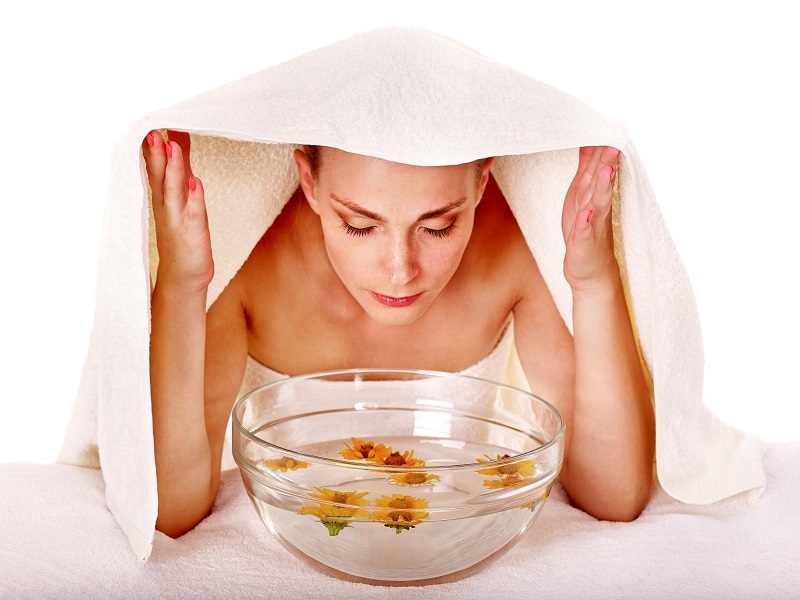Master the Art of Hydrangea Care Today
Posted on 24/05/2025
Master the Art of Hydrangea Care Today
Few flowers evoke the charm and grace of a garden as effortlessly as hydrangeas. Boasting a diverse palette--from vivid blues and pinks to creamy whites and dreamy purples--hydrangeas can enliven any outdoor and indoor space with their lush blooms. To achieve bountiful blossoms and healthy foliage, however, you must understand the essentials of hydrangea care. In this comprehensive guide, you will discover how to grow, nurture, and maintain hydrangeas so that you can master the art of hydrangea care today.
Understanding Hydrangeas: A Floral Favorite
Before diving into specific hydrangea plant care tips, it's beneficial to get familiar with their types and unique needs. Hydrangeas are part of the Hydrangeaceae family, native to both Asia and the Americas, and comprise over seventy species. The most popular varieties include:
- Hydrangea macrophylla (Bigleaf Hydrangea or Mophead/Lacecap): Famous for showy, globe-like blooms.
- Hydrangea paniculata (Panicle Hydrangea): Features cone-shaped flowers that are hardy and reliable.
- Hydrangea quercifolia (Oakleaf Hydrangea): Displays distinctive foliage resembling oak leaves, turning beautiful shades in autumn.
- Hydrangea arborescens (Smooth Hydrangea): Known for the beloved 'Annabelle' cultivar's huge white heads.
- Hydrangea serrata (Mountain Hydrangea): Compact size, ideal for smaller gardens and containers.
Each hydrangea species has unique growing habits and requirements, making it vital to identify your plant before applying care recommendations.

Site Selection and Planting: Setting Up for Success
The foundation of successful hydrangea care begins with proper site selection and planting. Hydrangeas flourish in areas where their particular light and soil needs are met.
Choosing the Right Location
- Light: Most hydrangeas thrive in partial shade, although some varieties, like Panicle hydrangeas, can tolerate full sun if adequately watered.
- Protection: Pick a spot sheltered from strong winds, as large blooms and branches can be easily damaged.
- Spacing: Ensure ample space for air circulation to help prevent diseases such as powdery mildew.
Soil Preparation
- Soil Type: Hydrangeas prefer rich, well-draining soils rich in organic matter.
- pH Level: One of the unique aspects of hydrangea plant care is adjusting the soil pH to influence flower color--acidic soils yield blue blooms, alkaline soils result in pink or red flowers.
- Amendments: Work in compost or peat moss to enhance soil texture and fertility.
Planting Steps
- Dig a hole twice as wide and equal in depth to the root ball.
- Gently tease roots before setting the hydrangea in the hole at the same soil level as in its pot.
- Backfill with enriched soil, water thoroughly, and apply mulch to retain moisture and suppress weeds.
Hydrangea Watering Mastery
A crucial element of hydrangea care is maintaining optimal moisture. Hydrangeas have shallow roots, making them particularly susceptible to drought and heat stress.
- Consistent Moisture: Water deeply at least once a week; increase frequency during hot, dry spells.
- Morning Routine: Water early in the day to allow leaves to dry and minimize disease risk.
- Mulching: Apply a 2-3 inch layer of organic mulch (such as shredded bark or leaf mold) around the base, avoiding direct contact with stems.
- Container Hydrangeas: These dry out faster than in-ground plants and may need daily watering in summer.
Pro Tip: If you notice wilting hydrangea leaves during midday but see them perk up by evening, avoid watering immediately--check soil moisture first, as root stress or heat can also temporarily wilt the foliage.
Fertilizing for Flourishing Hydrangeas
To enjoy vibrant blooms and lush growth, you must supply the right nutrients. Fertilizing hydrangeas involves timing and balance.
- When to Feed: Apply a balanced, slow-release fertilizer early in the spring as new growth appears and again in early summer if needed.
- Type of Fertilizer: Use a granular, all-purpose fertilizer (such as 10-10-10) or one formulated specifically for flowering shrubs.
- Avoid Overfeeding: Too much nitrogen encourages leafy growth at the expense of blooms.
Special Note: For blue or lavender hydrangea flowers, use fertilizers low in phosphorus, as high-phosphorus levels can inhibit the plant's ability to absorb aluminum necessary for blue hues.
Pruning Techniques: Timing and Method Matter
Pruning is an art that will elevate your hydrangea care to a new level. Each hydrangea type has distinct pruning needs and calendar:
When to Prune
- Bigleaf and Mountain Hydrangeas: Prune immediately after blooming, as they flower on old wood from the previous year.
- Panicle and Smooth Hydrangeas: Prune in late winter or very early spring before new growth emerges; these bloom on new wood.
- Oakleaf Hydrangeas: Prune shortly after blooming; minimal pruning needed.
How to Prune
- Remove dead, damaged, or crossing branches first.
- Thin crowded stems to improve air circulation and boost light to the plant's interior.
- For size reduction, selectively trim stems back by one-third without removing all growth tips--these are vital for next year's flowers (on old-wood bloomers).
Controlling Pests and Diseases
Healthy hydrangeas are generally pest-resilient, but vigilance is key. If problems arise, early intervention helps.
- Common Pests: Aphids, spider mites, and scale can be managed with insecticidal soap or neem oil sprays.
- Disease Defense: Powdery mildew, leaf spot, and root rot stem from overly wet or humid conditions. Space plants adequately, remove infected foliage promptly, and never overhead water.
- Hydrangea Scale: This pest appears as white cottony masses on stems; prune and destroy infected parts or treat with horticultural oil.
Tip: Ensure your garden tools are clean and sanitized after use to prevent disease spread.
Color Secrets: Manipulating Hydrangea Flower Hues
Hydrangea enthusiast? You'll love the ability to manipulate your hydrangea flower colors. Color magic applies mainly to Hydrangea macrophylla types.
- Blue Blooms: Achieve blue flowers by maintaining acidic soil (pH 5.0-5.5). Incorporate elemental sulfur or aluminum sulfate according to package instructions.
- Pink/Red Blooms: For pinkish flowers, keep the soil more alkaline (pH 6.0-6.5) by adding garden lime.
- White Hydrangeas: Unfortunately, 'Annabelle,' 'White Dome,' and similar cultivars tend to remain white regardless of soil pH.
Be patient--changes in bloom color may take multiple growing seasons to fully materialize.
Overwintering and Seasonal Maintenance
Hydrangeas are beloved worldwide, but their winter hardiness varies.
- Protection: In colder climates, insulate roots by applying a thick layer of mulch. Wrap the base with burlap or horticultural fleece if late frosts threaten swelling buds.
- Container Plants: Move potted hydrangeas to a sheltered location or garage to avoid freezing roots.
- Post-Bloom Care: Remove spent blooms ('deadheading') if desired; for some, such as Oakleaf hydrangeas, leave spent flowers for autumn interest.
Creative Uses for Hydrangeas in Garden Design
Become a true hydrangea aficionado by exploring creative ways to incorporate these blooms throughout your landscape:
- Hedging: Plant in rows to craft a colorful, billowing border.
- Mixed Beds: Combine with roses, hostas, or ferns for a lush, layered look.
- Woodland Gardens: Oakleaf and Mountain hydrangeas excel in shady, woodland-inspired plantings.
- Containers: Compact cultivars such as 'Cityline' thrive in pots for patios, terraces, and balconies.
- Cut Flowers: Harvest for bouquets or dry blooms for ornamental arrangements year-round.
Common Mistakes and How to Avoid Them
Even the most passionate gardeners sometimes falter. Here's how to prevent the most frequent hydrangea care missteps:
- Overwatering: Leads to root rot; hydrate only when topsoil feels dry.
- Incorrect Pruning: Pruning Bigleaf hydrangeas in late winter eliminates next season's blooms.
- Lack of Fertility: Nutrient-poor soils limit flowering capacity.
- Ignoring Soil pH: If flower color isn't as expected, test soil pH before making adjustments.

Frequently Asked Questions About Hydrangea Care
Why aren't my hydrangeas blooming?
Most often, the culprit is improper pruning or frost damage to flower buds. Other causes may include insufficient sunlight, poor soil fertility, or hydrangea disease.
How can I revive a wilted hydrangea quickly?
Submerge the pot (or root ball if dug up) in a bucket of water for 30 minutes. Cut flowers can also revive by submerging the entire stem and flower head in cool water for several hours.
Is it possible to grow hydrangeas indoors?
Yes, but they require bright indirect light and high humidity. Choose compact varieties and avoid temperature extremes for the best indoor hydrangea care.
Can I propagate hydrangeas from cuttings?
Absolutely! Take softwood cuttings in early summer, remove lower leaves, dip in rooting hormone, and plant in moist soil. Humidity and warmth encourage root formation.
Conclusion: Elevate Your Garden with Expert Hydrangea Care
By following these expert hydrangea care tips, you can experience a brilliant display of blooms all season long. From proper planting and watering to mastering the science behind bloom colors, you're now equipped to cultivate stunning hydrangeas with confidence. Whether you dream of classic blue mopheads or airy panicle sprays, mastering the art of hydrangea care today will transform your landscape and bring lasting joy to your gardening journey.
Ready to get your hands dirty and fill your garden with these gorgeous blooms? Start nurturing your hydrangeas like a pro today--and enjoy their spectacular beauty for years to come!
Latest Posts
Popular Flowers in [NEIGHBOURHOOD]: What [POSTCODE] Locals Love
Flower Delivery in [AREA]: What Locals Need to Know
7 Fascinating Secrets About Tulips You Never Knew
Blossoming Identity: Which Flower Embodies Your Personality
Unveiling the secrets behind peony flower meanings and colors





